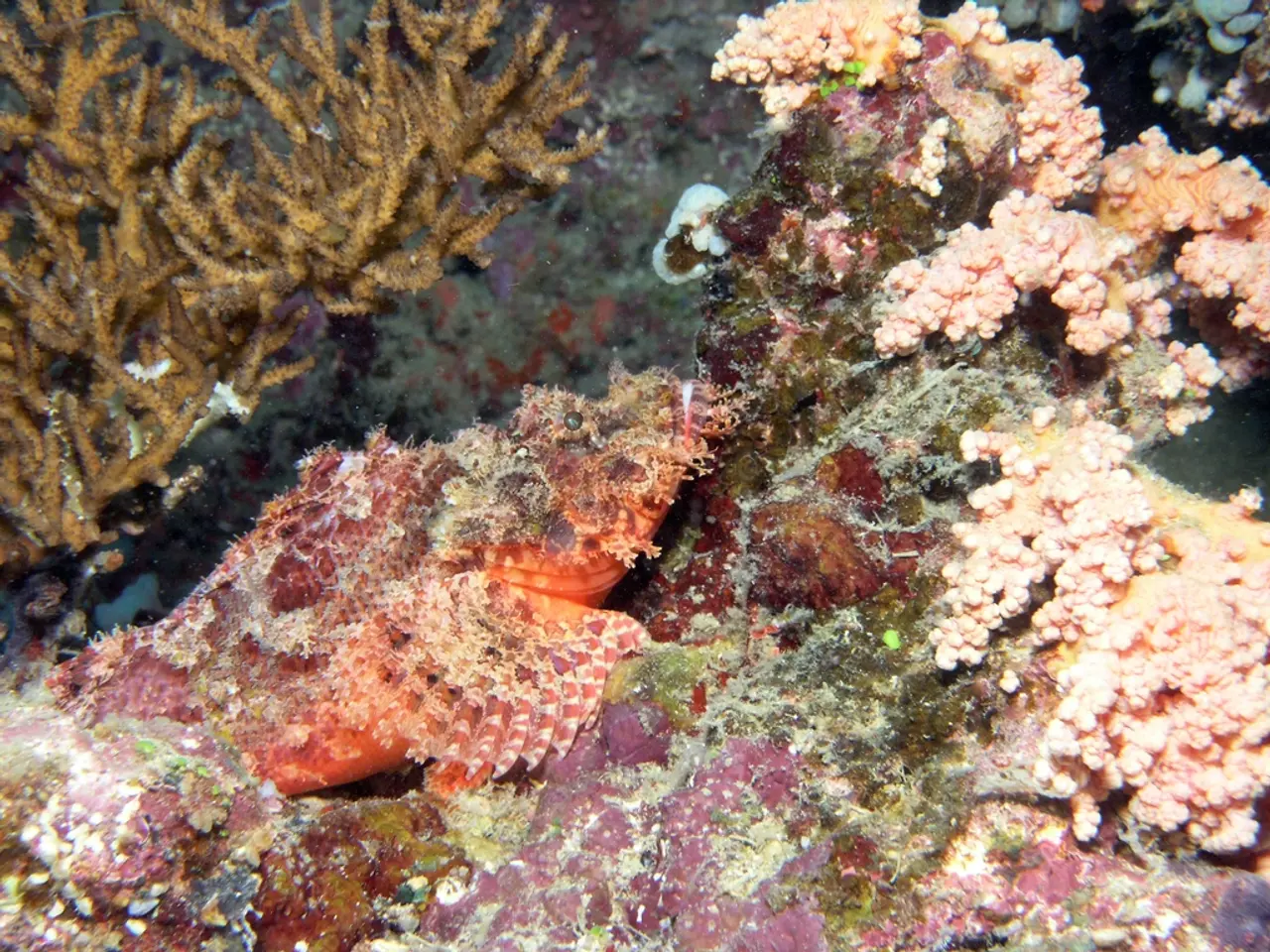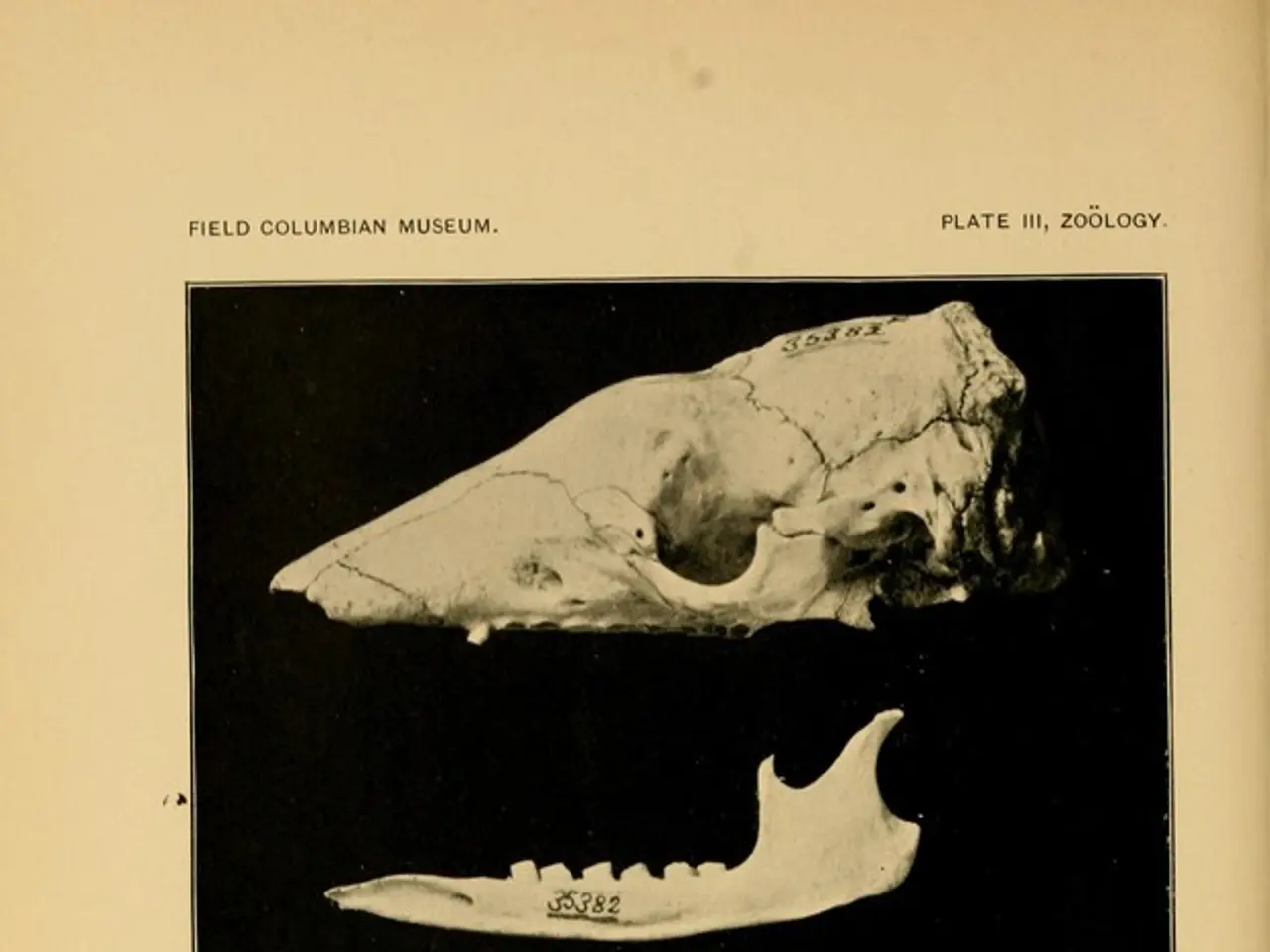Seagrasses Provide More Than Just a Blue Carbon Approach
Seagrasses - these wondrous, green underwater meadows stretch across oceans, from the tropics to the icy margins, and even visible from the comfort of space! They're flowering plants that quietly thrive in the shallows, sharing many characteristics with their terrestrial counterparts. Seagrass meadows span a staggering 300,000km² - that's roughly the same size as Italy! Covering 159 countries and six continents, these elusive 'lungs of the sea' have a significant impact on both marine life and human well-being, while acting as a globally vital carbon sink.
If you thought seagrasses were just lying low under the surface, think again!
A Carbon Powerhouse
Did you know that seagrasses are carbon superstars? According to the United Nations Environment Programme (UNEP), these little guys store up to 18% of the global coastal carbon – a whopping 38,000 billion metric tons! Compared to terrestrial forests, they can store twice as much carbon per hectare, and most of it is stored in the soil below, reaching depths of up to four meters. Additionally, they act as a safeguard for ocean acidification, impacting calcifying organisms like corals and shellfish.
A Bursting Hub of Diversity
Seagrass meadows are bursting with life! From large grazers like manatees, dugongs, green sea turtles, and even geese, to the smallest of critters overlooked beneath the sand, it's a smorgasbord of diversity! An adult dugong can munch on 64 to 88 pounds (28 to 40 kg) of seagrass a day, while an adult green sea turtle can take in about 4.5 pounds (2 kg) daily.
These seagrass meadows serve as crucial nurseries for species like the European eel, and 17 species of coral reef fish utilize the flats as their entire juvenile habitat.
A Multipurpose Marvel
Seagrasses boast a multitude of benefits, far beyond their carbon-capturing abilities! They contribute to our food security by nurturing global fisheries, acting as critical nurseries for commonly consumed species such as crustaceans and mollusks. They're also instrumental in coastal protection, with their extensive root systems cushioning the sea bed in a manner similar to terrestrial grasses preventing soil erosion. This aids in protecting coastlines from flooding and storm surges.
Their beauty and diversity make them prime attractions for tourists, with destinations like Akumal in Mexico and Marsa Alam in Egypt offering marvelous opportunities for swimming with turtles and diving with dugongs. Additionally, seagrass meadows shelter historical treasures, from shipwrecks to submerged ancient cities. Lastly, their ability to reduce harmful bacterial pathogens has significant implications for disease control in humans, fish, and invertebrates.
A Wake-up Call for These Vital Ecosystems
Alarm bells are ringing! According to reports, since 1990, we've witnessed a 7% annual decline in seagrass cover worldwide, equating to a lost football field every 30 minutes. Threats to seagrasses are aplenty – climate change, pollution, coastal development, overfishing, and boating activities pose significant risks to these meadows.
But it's not all doom and gloom! With the adoption of the Global Biodiversity Framework, the aim is to protect 30% of coastal and marine ecosystems, including seagrasses. Although mangroves and coral reefs have better protection under Management Protection Areas (MPAs), seagrasses are receiving increased attention due to their many ecosystem services. However, knowledge gaps still exist among the general public. Education and active protection efforts are essential for ensuring the survival and thriving of these crucial meadows.
Seagrasses: The Powerhouse of the East Coast of Virginia
In an inspiring demonstration of resilience, scientists at the Virginia Institute of Marine Science (VIMS) and The Nature Conservancy have successfully restored over 3,612 hectares of seagrass meadows off the Eastern Shore of Virginia, nurturing more than 70 million eelgrass seeds over 20 years. The success of this initiative is demonstrated by the growth of seagrasses filling an area that would typically take over 100 years to develop naturally. The project not only boosts seagrass coverage but also enhances water quality, nitrogen storage, and carbon sequestration.
"Seagrasses are superheroes for our environment. They purify water, protect us from storms, provide food for millions, support rich biodiversity, and efficiently store carbon. Given everything seagrasses offer us, it's crucial we protect and restore them.”
Taking Action to Protect Seagrasses
- Responsible Tourism: When visiting seagrass meadows, avoid causing damage to the plants or marine species.
- Citizen Scientist: Participate in citizen science projects that further scientific research on seagrasses and assist in locating seagrasses for restoration efforts.
For instance, the SeagrassSpotter project, created by Project Seagrass in partnership with Cardiff University and Swansea University, welcomes public participation in identifying seagrass locations for research purposes. Your involvement can help predict future restoration sites!
Together, we can ensure the long-term survival and prosperity of these magical green underwater meadows that offer so much to our oceans, our food supply, and our climate.
Seagrasses, being carbon superstars, store up to 18% of the global coastal carbon, equivalent to 38,000 billion metric tons. This amounts to twice as much carbon per hectare compared to terrestrial forests, with most stored in the soil below reaching depths of up to four meters.
These underwater meadows, teeming with life, provide critical nurseries for species such as the European eel and coral reef fish. They serve as vital feeding grounds for large marine life like manatees, dugongs, geese, green sea turtles, and more. An adult dugong can consume 64 to 88 pounds (28 to 40 kg) of seagrass daily, while an adult green sea turtle takes in about 4.5 pounds (2 kg) daily.
Seagrasses play a significant role in ensuring food security, nurturing global fisheries, and acting as critical nurseries for commonly consumed species like crustaceans and mollusks. They also contribute to coastal protection by preventing soil erosion, aiding in the protection of coastlines from flooding and storm surges.
The beauty and diversity of seagrass meadows make them prime destinations for tourists, offering opportunities to swim with turtles and dive with dugongs in places like Akumal in Mexico and Marsa Alam in Egypt. However, seagrasses are under threat due to climate change, pollution, coastal development, overfishing, and boating activities.
Reports show a 7% annual decline in seagrass cover worldwide since 1990, with a lost football field every 30 minutes. The Global Biodiversity Framework aims to protect 30% of coastal and marine ecosystems, including seagrasses. Education and active protection efforts are essential for ensuring the survival and thriving of these crucial meadows.
In an effort to restore seagrasses, scientists at the Virginia Institute of Marine Science (VIMS) and The Nature Conservancy have successfully restored over 3,612 hectares of seagrass meadows off the Eastern Shore of Virginia, nurturing more than 70 million eelgrass seeds over 20 years.
Taking action to protect seagrasses includes responsible tourism, minimizing damage to seagrasses and marine life, and participating in citizen science projects like SeagrassSpotter to aid in research and locating seagrasses for restoration efforts. By protecting and restoring seagrass meadows, we can ensure their long-term survival and the continued provision of essential ecosystem services.
Seagrasses, often overlooked yet enormously beneficial to our lives, offer numerous benefits like improving water quality, storing nitrogen, and reducing harmful bacterial pathogens, thereby impacting human, fish, and invertebrate health. They contribute to sustainable fisheries, coastal protection, and support a rich biodiversity, making them vital components not only for marine ecosystems but also for the tourism industry, nutritional security, and climate change mitigation. Seagrasses truly embody the harmony of health-and-wellness, fitness-and-exercise, climate-change, environmental-science, and lifestyle, making them powerful instruments in our quest for a sustainable future.




